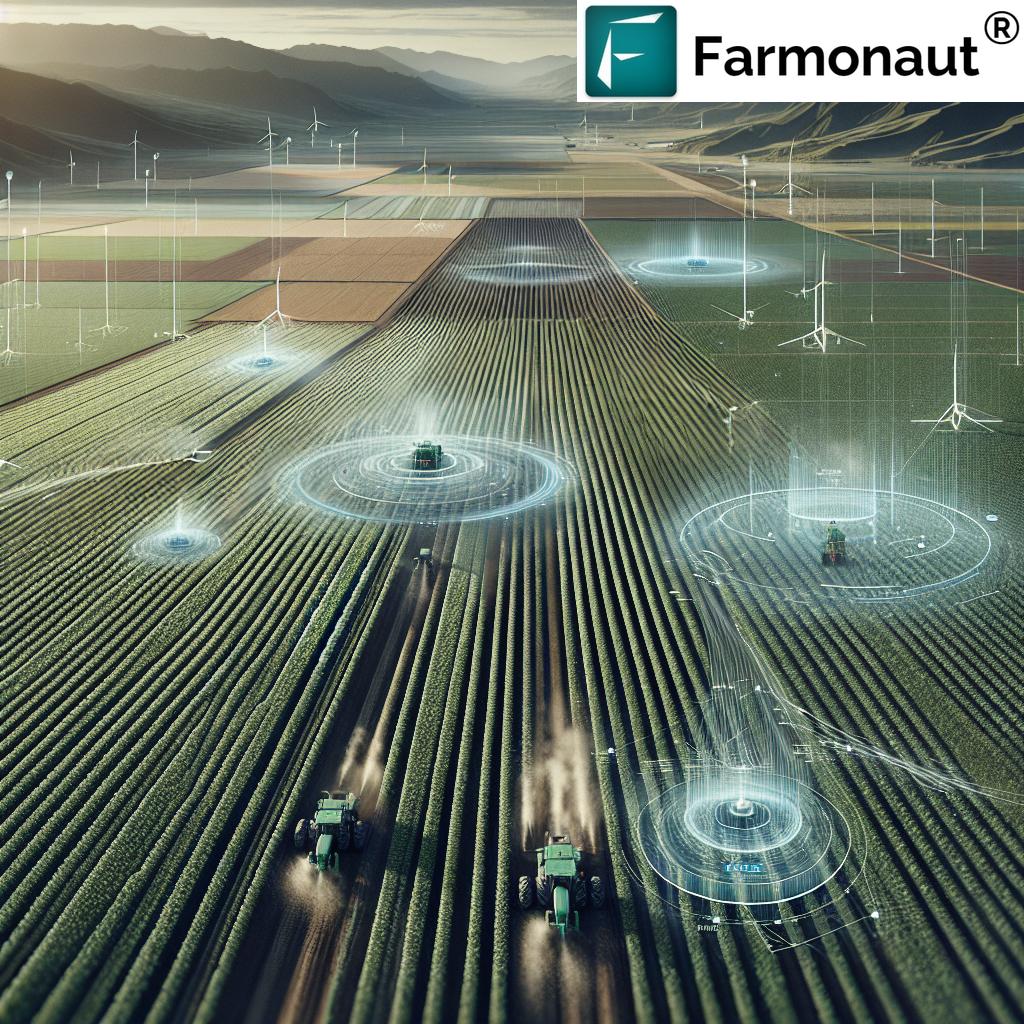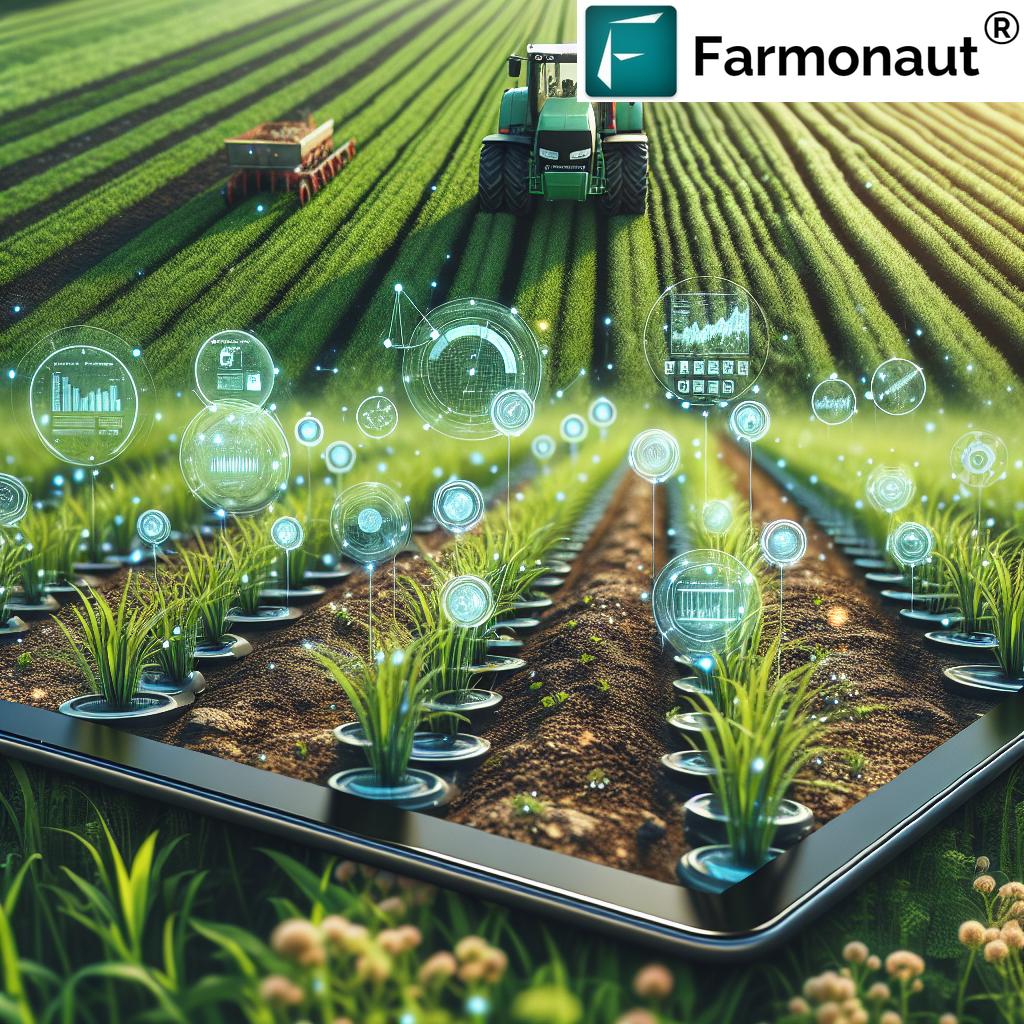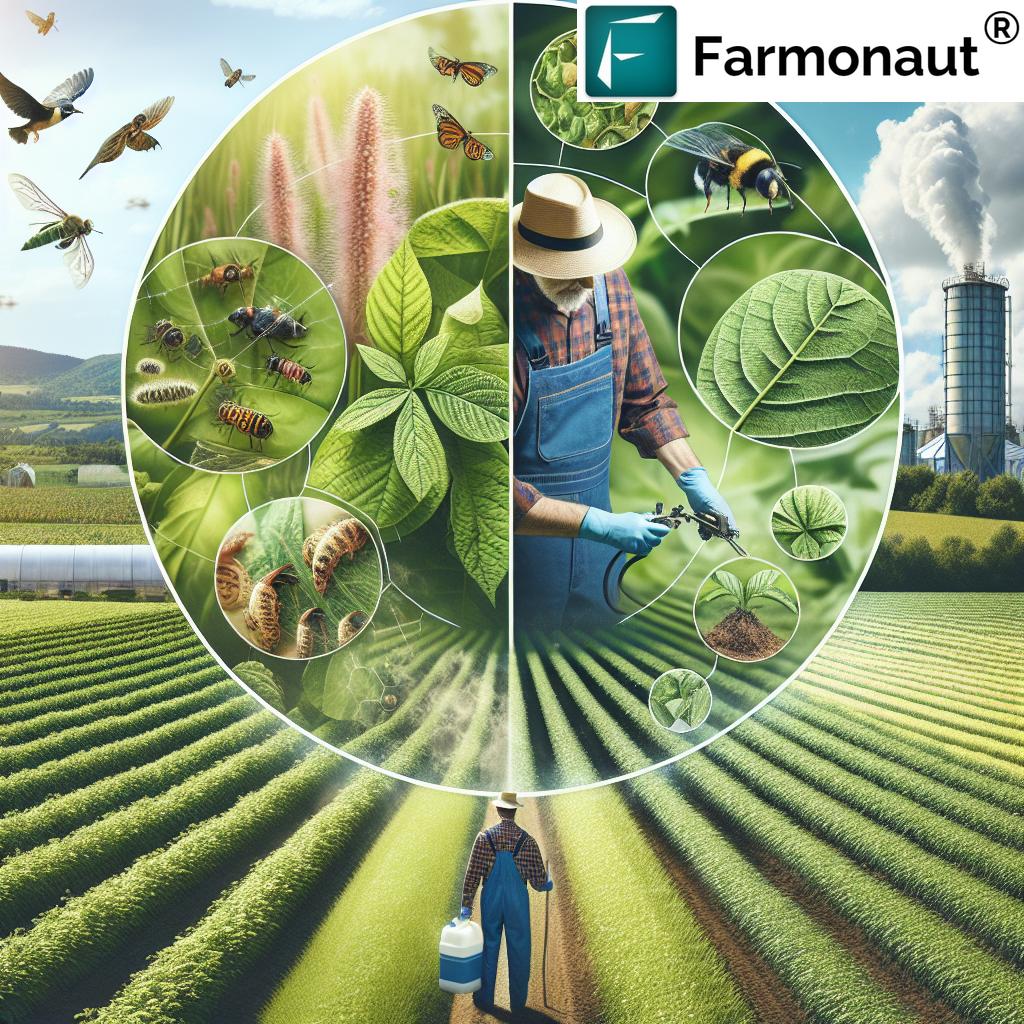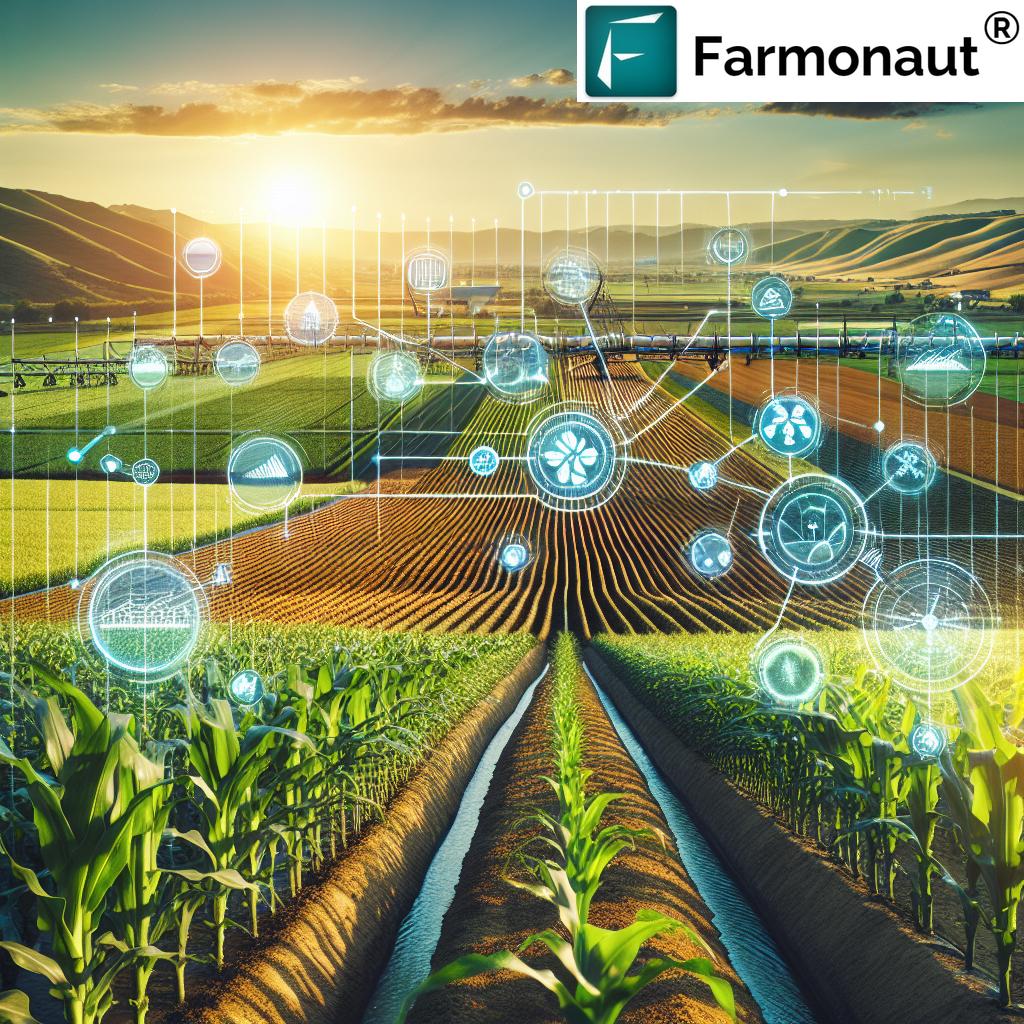What Is Precision Agriculture? 7 Shocking Tech Secrets
Summary: Understanding Precision Agriculture
Precision agriculture—often called precision farming—is rapidly reshaping how we manage our farms and resources. By leveraging advanced technologies like satellite imagery, AI, IoT-driven smart sensors, remote sensing, and more, we can monitor plant health and soil moisture, optimize crop growth, and make results-driven, informed decisions for our farms.
This technology-driven revolution means we’re not just reducing costs and boosting productivity—we’re also leading the way towards sustainable farming solutions globally. For farmers, agribusinesses, and governments, the integration of these tools signifies a transformation in resource management, data analytics, and operational efficiency.
A New Era in Farm Management: How Precision Farming Technologies Work
Let’s delve into how integrating tools such as Global Positioning System (GPS), Geographic Information Systems (GIS), internet of things (IoT), satellite imagery, AI, and machine learning revolutionizes farm management systems. Precision agriculture empowers us to:
- Monitor soil and crop health at granular levels
- Optimize irrigation, fertilizers, and pesticides application based on actual field conditions
- Minimize input waste and environmental impact
- Analyze patterns, predict pest infestations, and facilitate targeted interventions
- Enable data-driven decision making for greater operational efficiency
As a result, we see higher yields, lower costs, and a more sustainable approach to farming.
How Farmonaut’s Satellite Technology is Revolutionizing Land Use in Agriculture
The 7 Shocking Tech Secrets in Precision Agriculture
Precision agriculture stands on the foundation of seven core innovations. Let’s break down each “tech secret” and see how these technologies empower our farms:
1. Satellite-Based Crop Health Monitoring
Modern advanced farm management systems utilize satellite imaging to remotely monitor crop health and soil moisture levels at regular intervals. By analyzing NDVI (Normalized Difference Vegetation Index) data, we gain precise insights into crop vigor, stress regions, and yield trends—enabling timely interventions for pest control, irrigation, and fertilizer management. Farmonaut’s platform is built around this approach, offering easy access to satellite-powered insights for farmers worldwide.
- Benefit: Data-driven crop management means healthier fields and minimized resource waste.
- Related Tech: Sustainable Carbon Footprinting with satellite tracking.
2. GPS and Geographic Information Systems (GIS) for Precise Mapping
We depend on GPS (Global Positioning System) for accurate field mapping, navigation, and machinery guidance. Coupled with GIS (Geographic Information Systems), these tools analyze spatial variations in soil quality, moisture, and crop yields. By integrating GPS and GIS, our planting, fertilization, and harvesting become exceptionally accurate—saving time, seeds, and inputs.
- Benefit: Targeted management for every meter of the field.
- Use Case: Integrated in Large Scale Farm Management for high precision plantation and logistics.
3. Crop Monitoring with Drones & Remote Sensing
Drones with high-resolution cameras and sensors capture aerial imagery of fields, diagnosing plant stress, pest outbreaks, nutrient deficiencies, and waterlogging. This bird’s-eye view supports early detection of potential issues—allowing timely and localized responses.
- Benefit: Rapid field scouting without manual labor, optimizing spray and treatment schedules.
- Keyword Highlight: Crop monitoring with drones, remote sensing, and aerial imagery for actionable insights.
Farmonaut’s Advanced Agri Solutions: Precision Crop Area Estimation – Egypt Case Study
4. Variable Rate Technology (VRT) in Agriculture
Variable rate technology in agriculture employs data analytics and smart machinery to adjust application rates of seeds, fertilizers, and pesticides based on real-time soil/crop variability. Instead of “one-size-fits-all” input, VRT ensures each subfield receives only what it needs—maximizing efficiency and reducing input waste.
- Benefit: Input savings up to 20–30% and optimized yields.
- Supporting Tech: Advisory tools guide precision seeding and fertilization, especially for plantation crops.
5. IoT Sensors and the Internet of Things in Farming
The internet of things in farming connects smart soil moisture sensors, temperature probes, nutrient meters, and weather stations across fields. These IoT devices collect and report real-time environmental data to our farm management systems. Automated irrigation and equipment maintenance alerts help us optimize water usage and reduce machinery downtime.
- Benefit: Up to 30% water savings, lower labor, and fewer crop losses from weather extremes.
- Related Tech: Comprehensive Fleet and Resource Management for equipment and logistics efficiency.
6. Artificial Intelligence & Machine Learning in Agriculture
Artificial intelligence in agriculture—augmented by machine learning—enables us to analyze massive datasets, forecast yield and weather patterns, and predict pest outbreaks. AI-driven algorithms not only detect issues faster, but also automate decision-making for fertilizer scheduling, irrigation, and pest control.
- Benefit: Proactive, predictive decision-making supports sustainable growth and resource efficiency.
- Keyword Highlight: AI, machine learning, and advanced analytics for data-driven farming.
Farmonaut Covered By Radix AI: Leveraging Remote Sensing and Machine Learning for a Greener Future
7. Blockchain-Based Traceability & Big Data Analytics
Through blockchain technology, every batch of harvest—from field to consumer—is securely tracked for provenance and quality. Incorporating big data analytics brings transparency and helps us comply with food standards.
- Benefit: Enhanced consumer trust, reduced fraud, and simplified compliance with regulatory standards.
- Use Case: Secure, transparent Product Traceability using blockchain for sustainable, ethical supply chains.
The Role of Artificial Intelligence in Agriculture – Farmonaut | Agritecture | Joyce Hunter
Technology Impact Comparison Table in Precision Agriculture
| Technology/Innovation | Function | Estimated Efficiency Boost (%) | Sustainability Impact | Implementation Example |
|---|---|---|---|---|
| IoT Sensors | Real-time soil moisture & environmental data collection | Up to 30% water savings | Conserves water, reduces over-irrigation |
Soil moisture sensors for farming, automated irrigation systems |
| AI-Driven Drones | Aerial imagery for monitoring crop health, pest, and nutrient issues | Early detection: Up to 20% yield protection |
Minimizes pesticide use |
Crop monitoring with drones, rapid pest/disease mapping |
| Satellite Imaging | Remote sensing, NDVI-based health & yield prediction | 15-30% yield increase by data-guided action |
Lowers resource waste | Farmonaut’s satellite health monitoring, zone-wise growth analysis |
| Precision Irrigation | Automated, data-based water delivery | 30-40% reduced water consumption | Improves soil health, prevents runoff |
IoT-powered drip/sprinkler systems adjusting via real-time moisture data |
| Variable Rate Technology (VRT) | Optimized input application (seeds, fertilizers, pesticides) | Up to 25% input savings, potential 15% yield boost |
Reduces chemical impact, soil quality preservation |
Field-specific fertilization and seeding by data analytics |
| Big Data Analytics | Integration & analysis of farm data for predictive management | Up to 30% cost reduction | Resource-efficient, minimized waste |
Advanced farm management systems, digital agronomy platforms |
| Automated Machinery | GPS-guided tractors, planters, sprayers, and harvesters | 15-20% operational efficiency increase | Decreases fossil fuel and input waste | Smart fleet management, GPS navigation for field operations |
Key Benefits of Precision Farming Technologies
Let’s explore the practical outcomes of adopting precision agriculture and advanced data analytics in our operations:
- Increased Productivity: Farmers often report 20–30% yield gains by optimizing “when, where, and how much” they sow, fertilize, and irrigate.
- Cost Efficiency: Input costs can fall sharply by applying seeds, fertilizers, and pesticides only where needed.
- Environmental Sustainability: Reduced chemical and water usage means we’re protecting soil and water quality for future generations.
- Enhanced Farm Management: Centralized systems track all operations—planting, irrigation, harvesting—allowing flexible response to challenges like pest outbreaks or drought.
- Transparent Supply Chains: Blockchain traceability builds consumer trust and regulatory compliance via secure, auditable records.
For those seeking detailed solutions, Farmonaut’s Product Traceability Platform blends blockchain and data analytics for secure and trusted agricultural supply chains.
Challenges and Considerations in Precision Agriculture
- High Initial Costs: Acquiring advanced farm management systems, IoT sensors, and drones can be expensive for many farmers, especially in developing regions.
- Data Management & Ownership: Privacy and data ownership are major concerns. Who controls the massive farm data generated by connected devices?
- Technical Expertise: Farmers need training to use technology, analytics, and AI-powered systems. Lack of skill may slow adoption.
- Integration with Existing Systems: Interoperability between different brands or platforms is often limited by a lack of open standards.
- Connectivity: Some rural regions lack the internet infrastructure needed to support real-time data applications.
Farmonaut: Making Precision Agriculture Accessible
At Farmonaut, our mission is to democratize precision agriculture—making it affordable and accessible to small and large farmers alike. Here’s how we deliver transformative technology-driven solutions:
Farmonaut’s Core Technologies
- Satellite-Based Crop Health Monitoring: Multispectral images reveal NDVI trends, soil moisture, and growth variability, guiding precise interventions for every part of your fields.
- AI Advisory: Our Jeevn AI advisory system fuses weather, satellite, and field data to recommend irrigation, pest management, and fertilization strategies in real-time.
- Blockchain-Based Traceability: By recording every farm operation and transfer, farms and food businesses secure transparent, tamper-proof supply chains.
- Fleet & Resource Management: Monitor tractors, harvesters, and fleet movement, optimizing routes and reducing operational costs for large-scale operations.
- Carbon Footprinting: Track on-farm carbon emissions and take action for environmental compliance and sustainable certifications.
For a deeper dive, visit our:
- Carbon Footprinting platform to measure, monitor, and minimize your farm’s climate impact.
- Crop Loan & Insurance Verification system for quick, satellite-based assessment—making agricultural finance more secure and accessible.
- Fleet Management tools for optimizing logistics, vehicle safety, and reducing overall fuel costs.
Accessible, Flexible, and API-Ready!
- Subscription-Based: Affordable options for smallholders, agribusinesses, and government agencies.
- App & Web: Track and manage via Android, iOS, or Web Platform anywhere, anytime.
- API Integration: Connect Farmonaut’s satellite and weather data with your own systems via our Farmonaut API.
Check the Developer Docs
Future Outlook: Next-Gen Farming Solutions
The future of precision agriculture is truly promising. As AI, machine learning, IoT, and blockchain mature, we can expect:
- Smarter automation—Robots and drones operating seamlessly with minimal human intervention, informed by real-time data from the field.
- Climate resilience—Predictive analytics help us combat drought, pests, and weather volatility, protecting food security on a global scale.
- Seamless integration—Uniform data standards will make it effortless to connect sensors, management apps, and equipment across brands and regions.
- Proactive sustainability—Integrated carbon, water, and ecosystem monitoring for sustainable farming solutions that balance profit and planet.
- Extensive traceability—Secure, blockchain-powered supply chains that meet both consumer expectations and regulatory demands.
Farmonaut stands ready to guide you into this future, offering all-in-one integrated solutions for both small farms and large agribusinesses. Whether you aim to boost productivity, embrace sustainability, or tap into smart financing, data-led precision agriculture is the way forward.
Get Started with Precision Agriculture
Ready to embrace the next era of precision farming technologies?
Interested in automating your farm’s data analytics or connecting your management tools?
See our Farmonaut API and Integration Docs to get started with seamless system integration for your agritech projects!
FAQs: Precision Agriculture Explained
What is precision agriculture?
Precision agriculture is an innovative approach to farm management that uses technologies like GPS, IoT, remote sensing, AI, and data analytics to monitor and optimize the growth and health of crops. By tailoring actions such as fertilization, irrigation, and pest control to the unique needs of each area in a field, it maximizes efficiency and sustainability.
How does remote sensing help in farming?
Remote sensing, through drones or satellites, provides aerial imagery that reveals variations in crop health, moisture, and pest pressure. Farmers can detect issues early and act fast, reducing crop losses and input waste.
What is variable rate technology (VRT) in agriculture?
VRT is a system that analyzes field variability and adjusts the rate of inputs—like seeds, fertilizers, pesticides—at each location in the field. This both optimizes yield and minimizes resource waste.
Why is data analytics important in precision farming?
Data analytics enables us to identify trends, forecast problems, and make informed decisions. Rather than guessing, farmers use evidence-based insights for every operation, resulting in higher productivity and lower environmental impact.
Can small farmers afford precision agriculture?
Yes! Solutions like Farmonaut are specifically designed to be affordable. Farmers can access essential insights and services via mobile apps without huge capital investment in hardware.
How does blockchain benefit farming?
Blockchain records every stage of a product’s journey. This ensures traceability, secures the integrity of food supply chains, and builds trust with consumers by providing proof of origin and handling.
Where do I start with precision agriculture?
Begin by monitoring soil and crop health using tools like Farmonaut’s satellite-powered app. Gradually add IoT sensors, embrace data analytics, and move towards integrated farm management systems to steadily boost results.
Ready to harness the power of data-driven sustainable farming solutions? Dive into precision agriculture today with Farmonaut—your affordable, global technology partner.












